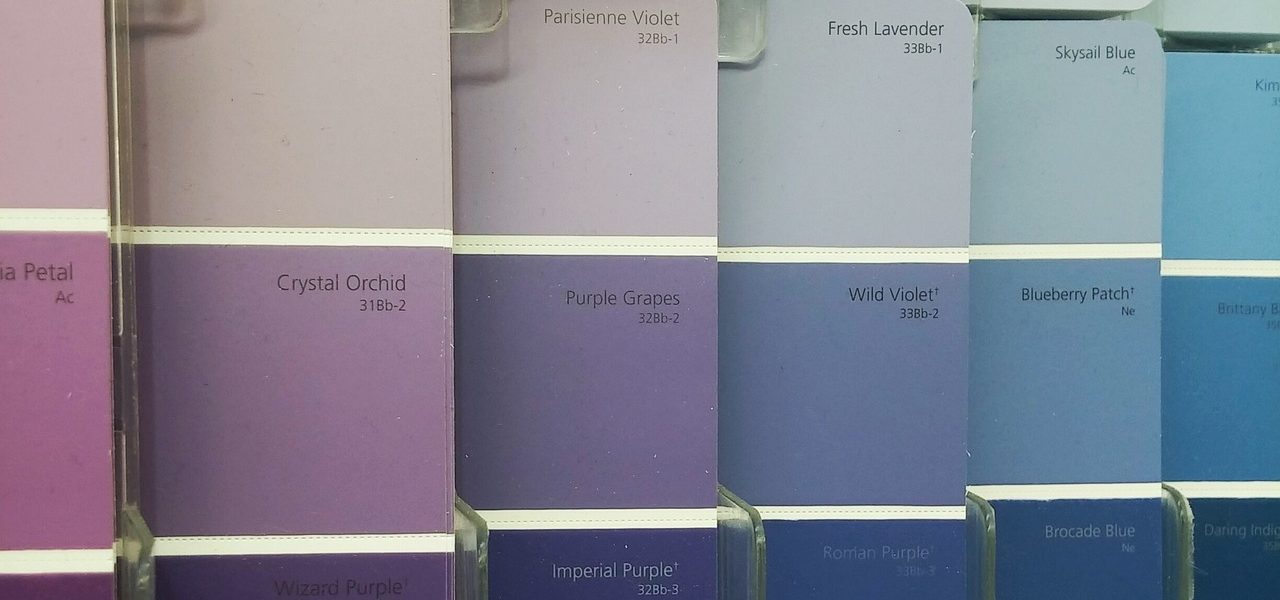After a long and tiring day at work, school, or even socialising, your bedroom offers a safe haven for some much needed rest and recuperation. The amount of comfort and relaxation your bedroom provides can be determined by a number of things, from its furnishings and homely additions, through to the colour scheme applied to it.
Colour can have a huge impact on how soothed and settled you feel in your own bedroom, which in turn have play a major role in how well you sleep. If you suffer from sleepless nights, it could be worth changing the colour scheme you have in your bedroom.
Top tips for starting your search
Colours are often associated with emotions and feelings, as well as personalities and characteristics. As such, it’s important to consider these factors and which colours best suit your needs, when choosing which shade to opt for in yours or your family member’s bedroom.
Opt for soft, neutral shades
Nowadays, there are plenty of neutral shades that can maintain your bedroom’s simplicity, whilst offering some incentive to sleep and awake soundly. Look for shades labelled vanilla, latte or mocha, for example, that introduce more natural, earthy shades to your bedroom. They’re close enough to beige so that you won’t find it a complete contrast to what you’re used to, but will create more calming emotions that will help you to relax.
For a colourful burst, choose paler palettes
Neutral shades aren’t for everyone, especially those with more vibrant personalities. Colourful rooms are especially important for babies and children, as it can help them to begin associating different colours with different meanings.
If you’re hoping to add more colour to the bedroom, stick with paler shades of whatever colour you are going for. It’s important to remember that the bedroom is a place for relaxing – bold and bright colours will prevent you from switching off and could impact the quality of your sleep.
What personally makes you feel calm?
There’s bound to be something specific that relaxes you, or whoever’s bedroom you are redecorating. Whether it’s seaside holiday memories or woodland walks, or perhaps that warm cosy feeling of being by the fireplace, think of what it is that helps you to feel at ease and try to add colour shades into your bedroom that reminds you of this.
Specific colours that work well in a bedroom
If you’re still at a loss of which colour to opt for, read on to discover which colours are said to be the best choice for bedrooms and why.
Blue
From duck egg to paler shades of azure, blue shades work perfectly in any bedroom. The colour is most associated with the sky and the ocean, both of which are very relaxing visions to think of. Being surrounded by soft shades of blue can instantly relax you and prepare you for a deep sleep.
Pink
Soft, subtle shades of pink are a fantastic way to evoke feelings of love, joy and happiness in a bedroom. It’s a comforting colour for many, so introducing paler pink tones to a bedroom is bound to send you off to the land of nod feeling at peace and ready for a good night’s sleep.
Yellow
Pale shades of yellow are a fantastic choice for any bedroom. It’s considered quite a neutral colour and, being associated with the sun and feelings of happiness, a yellow bedroom can make you feel calm and at ease.
Green
Pale, slightly earthy shades of green can take your mind to natural surroundings, something which is said to be very therapeutic. Look out for subtle shades of green to add to your bedroom’s colour scheme, to help you wake feeling positive about the day ahead.
Grey
A light shade of grey can add a slight hint of colour to a simplistic room, whilst keeping the room a soothing and peaceful place to settle down for the night. If you’re worried about straying too far away from white or other neutral colours, add some grey to your bedroom.
What about feature walls?
If you would like to add a feature wall to your bedroom, there are a few things to think about.
Firstly, try to position the feature wall behind the bed, so that you won’t be distracted by the patterns or colours when trying to sleep. Keep the colours and the patterns subtle, so that they don’t stimulate and energise your mind when entering your bedroom. Lastly, avoid adding a feature wall to a small bedroom, as it can create claustrophobic feelings from making the room appear even smaller.
There are plenty of options when it comes to decorating a bedroom, all whilst maintaining a peaceful and comforting ambience. The key is understanding what you find relaxing and introducing that into your bedroom through the use of colour.

